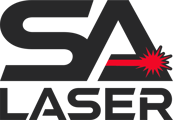Introduction
In this chapter, we'll guide you through the step-by-step process of creating a simple inversion effect using LightBurn. Let's get started.
Step-by-Step Guide
Step 1: Launching LightBurn and Importing the Design
To begin, launch the LightBurn software on your computer and ensure your galvo fiber laser system is properly connected. In LightBurn, click on the File menu at the top of the window, select Import, and choose the design or artwork you want to apply the inversion effect to. Click Open to import the design into LightBurn.
Step 2: Trace the Image
With the graphic imported, click on it to select it. Use Alt + T to open the trace window for the graphic or right-click on the graphic and select Trace Image. Trace the image as desired and then click OK.
Step 3: Removing the Outer Rectangle
After clicking OK, the vectorized graphic will be selected. Click the Ungroup button in the upper toolbar. Click off the graphic in the work area to deselect everything, then click on the outer outline and hit Delete. Select the remaining parts of the graphic and then click the Group button. The image is now inverted.
Step 4: Offset the Vectors
To offset the vectors, make sure the vectorized image is selected, then click Offset Shapes on the toolbar. Click the outward direction option, choose your preferred corner style, click the outer shapes only, adjust the offset distance value as desired, and click OK.
Conclusion
Congratulations! You have successfully learned how to create a simple inversion effect using LightBurn software for galvo lasers. The inversion effect can add visual interest and variation to your laser engraving project. Happy laser engraving!
